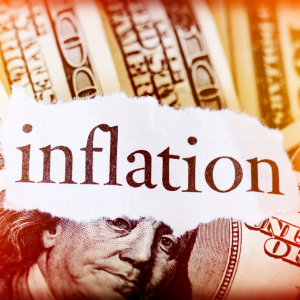
Energy Credits Under the Inflation Reduction Act
The Inflation Reduction Act of 2022 (the “Act”) was signed into law by President Biden on August 16, 2022. It contained several provisions that created, expanded and extended certain federal tax credits aimed at incentivizing the production and use of clean energy, as well as the purchase of machinery, equipment and construction of facilities used to produce clean energy.
As a result of the new emphasis placed on the development and production of renewable clean energy over the next 10-15 year period, it will be the most cutting-edge manufacturers that embrace the technological advances in the renewable energy industry that will be best positioned to take advantage of the income tax credits contained in the Act.
These credits include the Renewable Electricity Production Tax Credit (PTC) under Internal Revenue Code (IRC) Section 45; and the Energy Investment Tax Credit (ITC) under IRC Section 48. In addition, under IRC Sections 45Y and 48E, the Act created the Clean Electricity Production Tax Credit and the Clean Electricity Investment Credit-technology-neutral versions of the PTC and ITC that use an emissions-based framework that promotes clean energy technology. The credits created by the Act under IRC Sections 45Y and 48E replace the credits under IRC Sections 45 and 48 for tax years ending after December 31, 2024.
Tax Credits Under the Act Sections 45 & 48
The Act extends the PTC for facilities that begin construction by the end of 2024. (Previously, the credit was set to expire and would not be available for construction that started after December 31, 2021.) In addition, the Act increased the credit amount going from $26/MWh to $27.50/MWh. In addition, the Act modifies IRC Section 48 to allow projects that began construction after 2019, but before 2023, or projects that were placed in service after 2021 to qualify for the full amount of the ITC. (Previously, projects where the start of construction or date placed in service after 2019 and 2021, respectively, were only allowed a reduced amount of the ITC, and the credit for projects started after 2023 and placed in service after 2025 was set to be eliminated.) It is important to note that the Act also added certain wage and apprenticeship requirements for both the PTC and ITC. If these requirements are not met, the allowable credit is reduced by 80%.
The Act also introduced additional incremental amounts of the PTC and ITC for certain projects that were placed in service after 2022, meet certain “domestic content” requirements and/or are located in specified areas or communities. These additional incremental credit amounts can significantly increase the value of the PTC and ITC to your manufacturing company. For example, if a manufacturing company places qualifying property into service using qualifying domestic content, the project is located in an energy community and the project meets the wage and apprenticeship requirements, the credit percentage increases from 30% to 50%.
Finally, the Act provides an alternative way to monetize the PTC and ITC by allowing certain non-profit entities to receive a cash payment from the government instead of the tax credits by utilizing a “direct-pay” election. Additionally, for-profit entities, including manufacturers, now will have the ability to sell the PTC and ITC tax credits that it generates to a third party. Consideration for such a transfer must be paid in cash and is not includible in the income of the transferor.
Tax Credits Under the Act Sections 45Y & 48E
Starting in tax years after 2024, the Act establishes the Clean Electricity Production Tax Credit and the Clean Electricity Investment Credit -technology-neutral versions of the PTC and ITC that use an emissions-based framework that promotes clean energy technology and incentivizes taxpayers to reduce carbon emissions to zero. Like the credits under IRC Sections 45 and 48, the credits under IRC Sections 45Y and 48E also include provisions requiring certain wage and apprenticeship requirements to be met to qualify for the full amount of the credits, as well as the opportunity for additional incremental credits.
Conclusion
Over the next five years, it will be vital for manufacturers to fully take advantage of these lucrative tax credits, and our professionals at Dannible & McKee, LLP possesses the knowledge necessary to help your manufacturing company claim the maximum benefit available.
